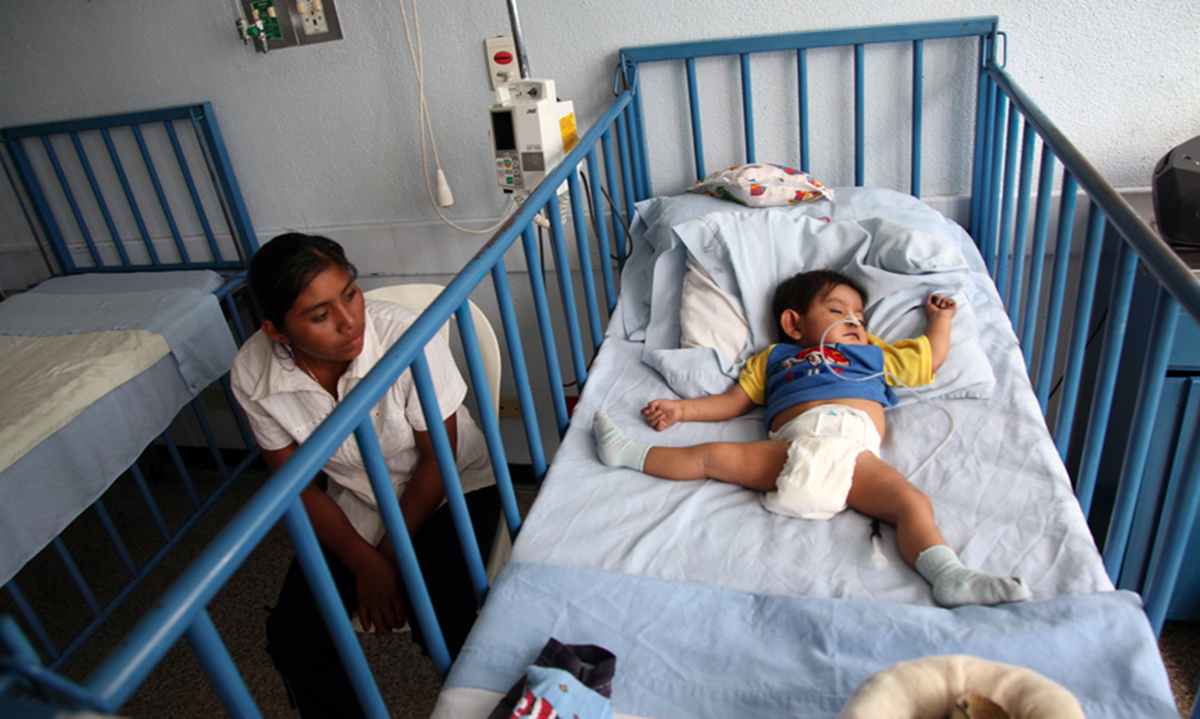Table of Contents
After performing a routine physical exam, the following tests may be performed to confirm the diagnosis of Alagille syndrome. These include:
- Blood tests (to check for cholesterol levels, etc.)
- Urine analysis
- X-ray
- Cardiology exam
- Abdominal ultrasound
- Slit-lamp exam (a low-power microscope focuses a high-intensity beam of light on the eye for detailed examination of various structures)
- Liver biopsy

Due to the variety of symptoms and their rare occurrence, Alagille syndrome can be difficult to confirm. At least three of any of the following symptoms must be present for a definitive diagnosis. These are:
- Jaundice
- Mal-absorption
- Xanthomas (build-up of fat under the skin)
- Pruritus (itching as a result of liver disease)
- Heart murmurs
- A thick extra line on the surface of the eye
- Distinct facial features (such as those mentioned above)
- Kidney disease
- Skeletal or spinal abnormalities
- Blood vessel abnormalities
Treatment
The treatment options available for patients suffering from Alagille syndrome focus on increasing the flow of bile to the respective areas of the bowel. This helps in improving the child’s ability to digest and reabsorb the required nutrients and vitamins from his diet, as well as eliminating excessive metabolic wastes from the body. As a result, his growth and development improve and may return to normal.
The various strategies to treat Alagille syndrome are as follows:
- Medications
Certain medicines help in increasing the flow of bile from the liver to the gallbladder and the small intestine.
- Medium-chain Triglycerides (MCT)
Even though fat emulsification and re-absorption is affected in Alagille syndrome, there are certain types of fat, namely MCT, which can still be digested. Therefore, these are often added in certain infant formulas and prescribed to new-born babies suffering from the disorder. Even if the baby is breast-fed, an additional supplement of MCT oil may be adequate to prevent growth retardation. No other dietary limitations are necessary.
- Fat-soluble Vitamins
The difficulties in fat digestion and re-absorption also lead to mal-absorption of fat-soluble vitamins, namely A,D,E and K. Blood tests are used to confirm these vitamin deficiencies. Oral doses of the required vitamins are usually prescribed to manage the condition. However, if the child cannot absorb vitamins or take them orally, they may be injected intramuscularly.
- Surgery
In certain cases, surgery may be performed at an infantile stage to confirm the diagnosis of Alagille syndrome. This includes a surgical procedure to examine the bile ducts and a liver biopsy. However, surgically reconstructing the abnormal bile ducts is not recommended. This is because bile can still flow from the ducts to its designated organs, even if in inadequate amounts. Furthermore, no procedure currently exists for the repair or compensation of the congenital loss of bile ducts.
See Also: First Organ Donation From An Infant Done In The UK
- Liver Transplantation
In very rare cases, liver scarring and cirrhosis can ultimately lead to liver failure. A liver transplant becomes necessary in such circumstances.
- Photo courtesy of Treehouse1977 via Flickr: www.flickr.com/photos/treehouse1977/3304911798
- Photo courtesy of JSbarrie via Flickr: www.flickr.com/photos/jsbarrie/5703695634
- www.liverfoundation.org/abouttheliver/info/alagille/
- http://www.niddk.nih.gov/health-information/health-topics/liver-disease/Alagille-Syndrome/Pages/facts.aspx
- http://www.childliverdisease.org/Information/Medical-stuff/Information-on-liver-diseases/Alagille-Syndrome

